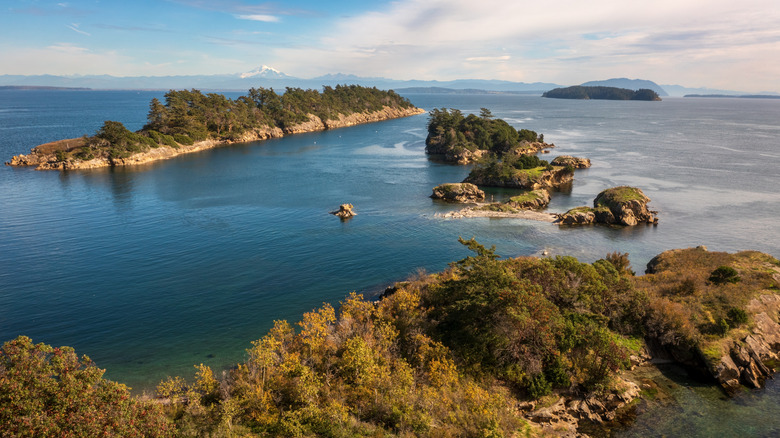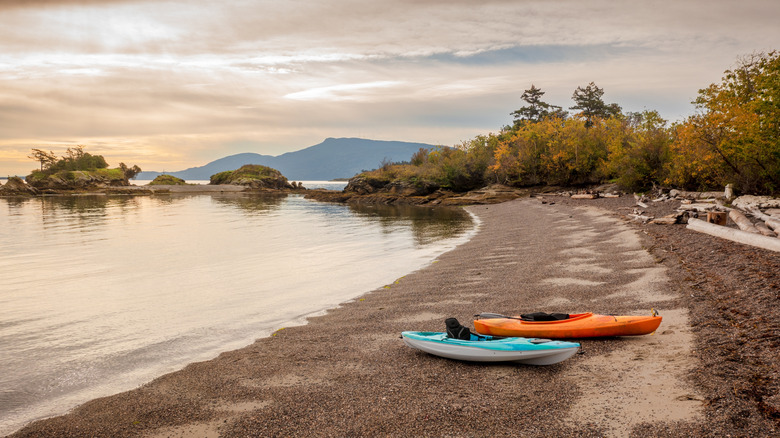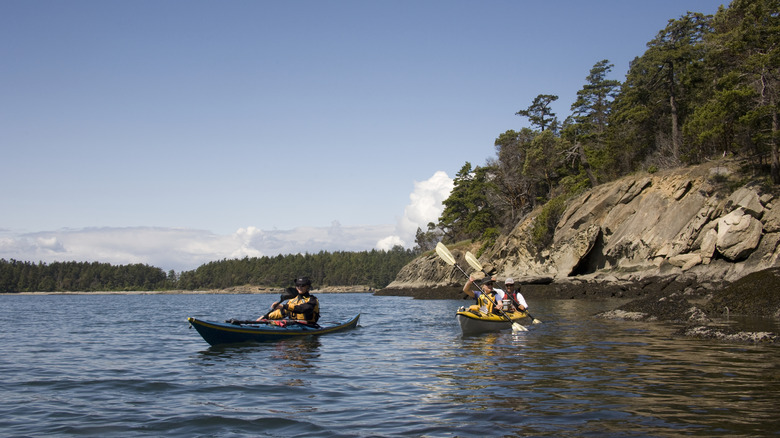Washington's Most Secluded San Juan Island Is A Truly Stunning, Tourist-Free State Marine Park
Washington State's San Juan Islands make up a heavenly archipelago of nearly 200 islands in the Salish Sea, not far from the Canadian border. With mild weather year-round, pristine nature almost anywhere you look, and a unique pace of Pacific Northwest life, you can't go wrong visiting any of them. If you're looking for a lesser-visited spot however, hop on a water taxi and head to Sucia Island for peace, incredible outdoor experiences, and epic views.
In the 1880s, Sucia was inhabited by a homesteading couple, Charles Henry Wiggins and his wife, Cowlitz Tribe member Mary Luzier. They moved there seeking refuge after their eight children were taken from them by the government and put into an Indian boarding school in Salem, Oregon. On the island they had five more children, raised livestock, and grew fruit trees that can still be seen in their former homesite. But these weren't Sucia's oldest residents. In 2012, 80-million-year-old dinosaur bones were discovered on what is now called Fossil Bay.
One of the farthest of the San Juans, Sucia makes up what is referred to as the Outer Islands with its neighbors Patos and Matia. Each of the Outer Islands is designated a State Marine Park, but Sucia is considered by many to be the highlight. There, on 814 acres, you'll find an abundance of wildlife, old growth forest, and untouched coastal scenery, plus 10 miles of hiking trails to explore. There are no shops or restaurants though, so come prepared for a deep immersion in nature.
How to get to Sucia island and where to stay
Getting to Sucia island takes a bit of planning. Most visitors drive the 90 minutes north from Seattle to the port of Anacortes, the perfect gateway to the San Juan Islands. There, a ferry picks up passengers and stops at Lopez, Shaw, Orcas, and San Juan Island. There is no ferry service to Sucia, however, so you'll have to hire a boat or take a water taxi from Anacortes port or Orcas Island. Locals recommend the Outer Island Excursions water taxi from Anacortes or, from Orcas, the Island Express water taxi. Several tour operators also offer guided day trips. You'll have to purchase a Discover Pass to visit the park, for around $10 per day.
Once you arrive, you'll be met with stunning coastal beaches, distant views of mountains, swaths of ancient forest, and sandstone formations that invite exploration. There is no lodging on Sucia, however, so if you want to stay, you'll have to camp. With 60 campsites available across the island on a first-come, first-served basis, plus four sites available with advanced reservation, locals say it's usually not difficult to secure a spot, even in summer. The nearest amenities like restaurants, lodging, and groceries, though, can only be found on Orcas Island. You'll want to be sure to bring everything you need. While drinking water is generally available in the summer months, it's best to check the Park's website in advance to be sure it's on before you go. Fees for camping run between $12 and $45, though it's extra to use the docks if you bring your own boat. You may also want to reference our guide to items you'll want for a quick and easy camping retreat.
What to do on Sucia Island
It's all about nature on Sucia Island, so you'll find yourself adapting to the pace of the land there. One of the best ways to do that is by taking a walk on some of the park's 10 miles of hiking trails. AllTrails users recommend the highly-rated Lawson Bluffs Trail for an easy out-and-back walk with beautiful views and plenty of tide pools. Similarly, the Echo Bay Loop is a moderately challenging option that circles most of the island, taking in some of its most popular sites like Ewing Cove, China Caves, and Fossil Bay. Watch for fossils as you walk, particularly at Fossil Bay, where you can see marine fossils dating back millions of years, like snails, plants, ammonites, and more. But be sure to leave what you find, fossil collecting is strictly prohibited in all Washington State Parks.
From the woodlands, beaches, and shoreline, watch for wildlife like seals and otters, or wild birds like tufted puffins, bald eagles, and black oystercatchers. Then try paddleboarding, kayaking, or snorkeling, all of which are popular here. With calm waters and abundant underwater creatures, it is considered a world-class destination for marine life. Fishing, clamming, and crabbing are also popular — just make sure you have the requisite fishing license before you gather anything.
For more on visiting the San Juan Islands, check out our guide to Friday Harbor on San Juan Island, a walkable coastal town that offers a charming quiet retreat.


